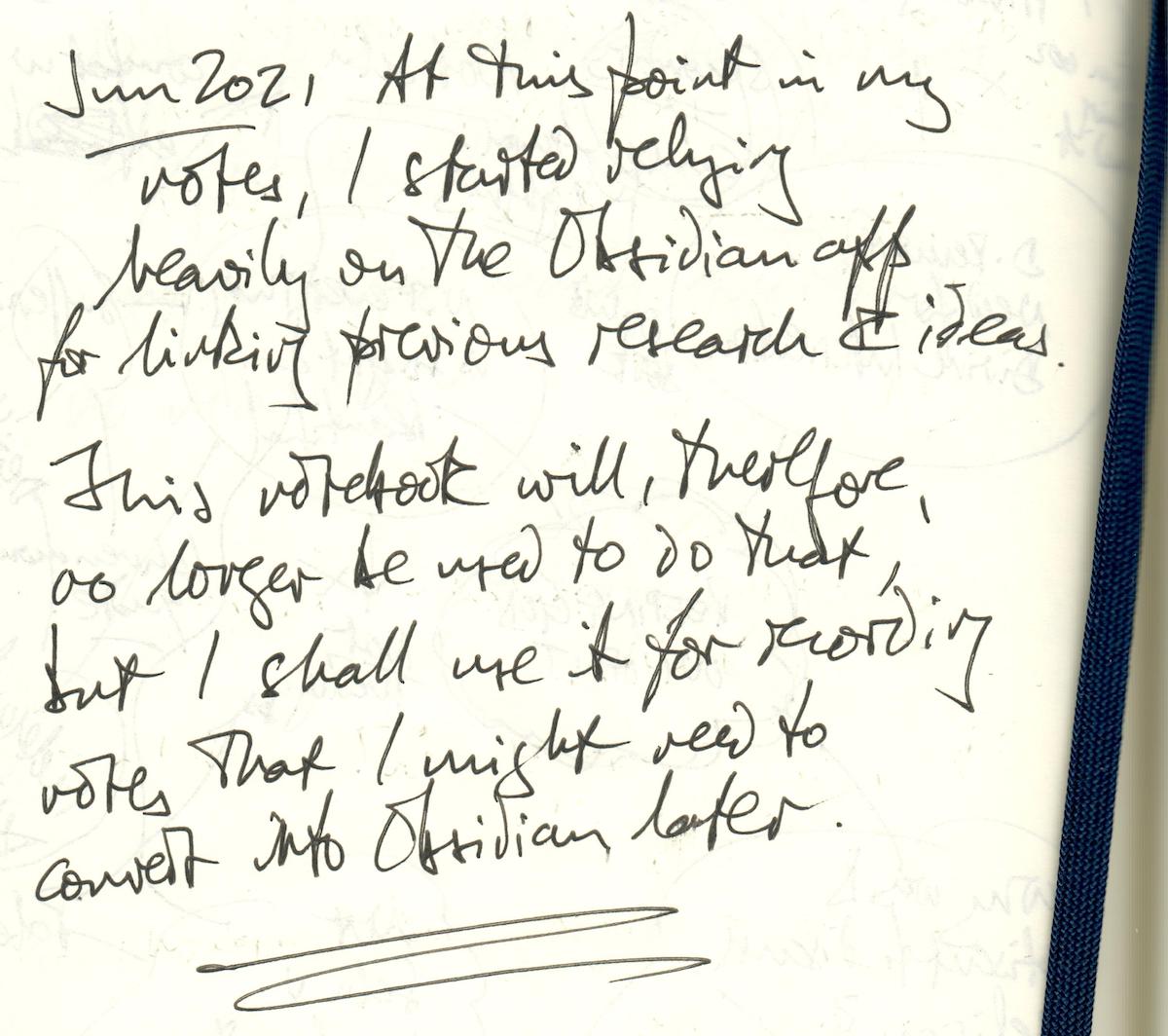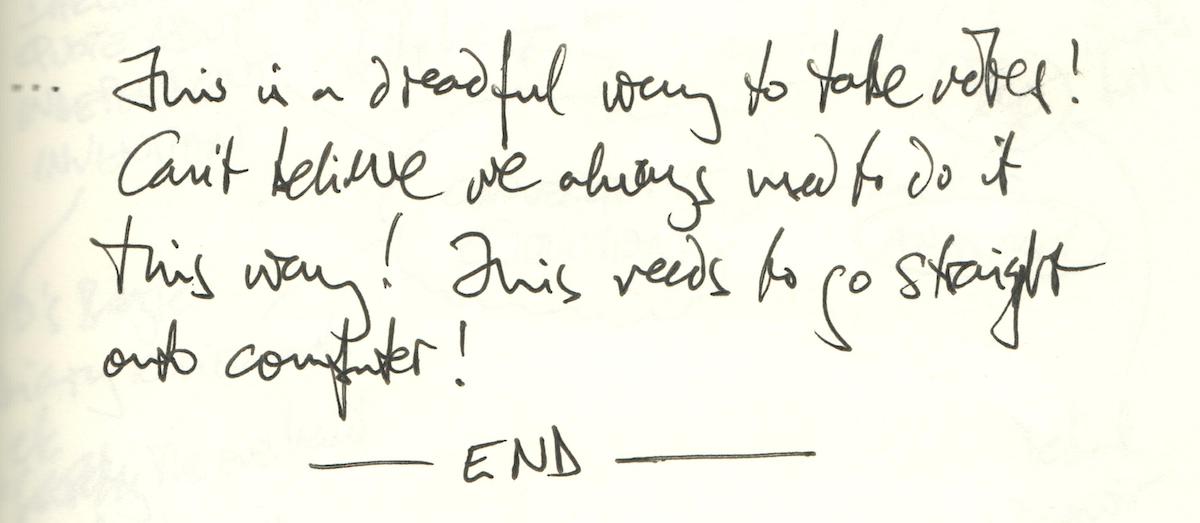Yesterday, with a couple of hours to kill waiting in my car, I decided to cross off a longstanding, low-priority task from my Todo list.
A couple of years ago, already deep into researching and writing my latest book, I became a convert to the Zettelkasten note-making system, and enthusiastically adopted the Obsidian app to help me keep track of my notes (other ‘Personal Knowledge Management’ apps are available). Until then, I recorded much of my research for individual chapters of my book in a dedicated Leuchtturm1917 notebook. I’m still using that notebook to brainstorm new chapters, etc; but nowadays my research is captured digitally as ‘source notes’ in Obsidian, one note per source. Having brainstormed my latest chapter on paper, I now construct a more detailed outline in Obsidian, linking the individual bullet points in the outline back to appropriate digital source notes.
My in-car exercise yesterday was to go through the pre-Obsidian section of my paper notebook to see if there were any gems I’d overlooked that hadn’t made it into my digital notes.
This turned out to be a fascinating exercise. As expected, I did indeed find a few nuggets of research that might prove useful in future, so will need to be incorporated into my Obsidian vault. I was also reminded of a number of ideas I’d considered incorporating into (now, first-draft completed) chapters, but hadn’t used. Some of these struck me as still having merit, so I made ‘future revision’ notes in Obsidian to remind me to reconsider them when I get round to my second draft.
But the real fascination in reading through my old notes was to see how I once naively recorded original research within the notes for the individual chapters in which I expected, hopefully, to use it. I was also astonished at just how often it became unclear which bullet points in my notes related to which source—and sometimes even which contributions were someone else’s, and which were mine. How could I ever have worked in that way?
One of the key principles of Zettelkasten is to keep your research separate from any thoughts and ideas (and, ultimately, content) you might eventually derive from it. This means a single source note (about a book or article you’ve read, say) might well end up being referenced in many different notes in your system. Rather than capturing your research within these individual notes, you link back from them to your source notes. This principle applies whether you’re using an digital notes system like Obsidian, or a traditional analogue index-card system.
The many notes in my digital system containing my thoughts, ideas, and chapter outlines all now link back to my separate notes about the sources that inspired them. This means I’m making better use of my source notes, as they’re typically being applied in more than one place. It also means compiling references for my individual chapters has become a relative doddle: I simply consult my outline note for the chapter, from which there are links back to all my original sources.
As I continued to read through my old paper notes, my astonishment at how I used to work grew and grew, until I reached the point at which I adopted my new system, recording this groundbreaking development for posterity in my trusty Leuchtturm1917:

…And then I burst out laughing. A couple of days after recording this momentous decision, I had briefly lapsed, forgetting there was a better way of working these days, and had started trying to record research for my latest chapter the old way, in my notebook. But I’d then realised what I was doing, and had left myself a note that I’d completely forgotten about until yesterday:

Two years later, I stand by that assessment.
Leave a Reply